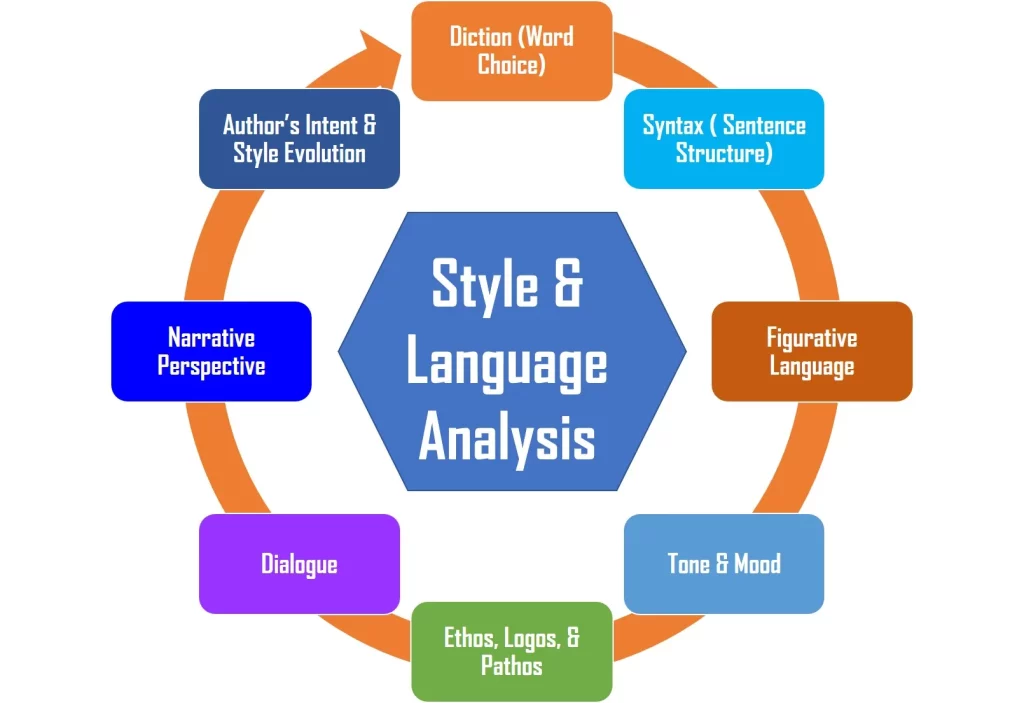
Style and language analysis in literature involves examining an author’s unique writing style and the specific language choices they make in their work. This analysis delves into how the author’s use of language, syntax, tone, and literary devices contributes to the overall meaning, mood, and impact of the text.
Key Aspects to Consider:
- Diction (Word Choice):
- Syntax (Sentence Structure):
- Imagery and Figurative Language:
- Tone and Mood:
- Rhetorical Devices:
- Dialogue and Character Speech:
- Narrative Perspective and Point of View:
- Allusion and Intertextuality:
- Repetition and Parallelism:
- Authorial Intent and Style Evolution:
Style analysis allows readers to appreciate the artistry and craft behind a literary work, uncover deeper layers of meaning, and gain insights into an author’s distinctive voice and thematic concerns. It requires close reading and thoughtful reflection on the interplay of various stylistic elements within the text.
Essential Style & Language Analysis Writing Tips: Dos & Don’ts
- Writing Style:
- Tone and Mood:
- Literary Devices:
- Syntax and Sentence Structure:
- Diction and Word Choice:
- Dialogue and Character Speech:
- Rhetorical Strategies:
- Authorial Intent:
- Reflect on Style Evolution (if applicable):
- Provide Textual Evidence:
Analyzing an author’s style and language choices enhances our understanding of the text’s artistic merit, thematic depth, and the author’s unique voice. It also enables readers to appreciate the nuances of literary craftsmanship and how these elements shape the reading experience.
Examples
- Metaphorical Language in “The Great Gatsby” by Fitzgerald
- Sentence Structure in Faulkner’s “The Sound and the Fury”
- Sensory Imagery & Figurative Language in Angelou’s “I Know Why the Caged Bird Sings”
- Sentence Structure in Hemingway’s “The Old Man and the Sea”
- Dialogue in Hurston’s “Their Eyes Were Watching God”
- Narrative Point-of-View in Salinger’s “The Catcher in the Rye”
- Elliptical Language in Dickinson’s Poetry
- Narrative Structure in Morrison’s “Beloved”
- Writing Style in Nabokov’s “Lolita”
- Dialogue in Bambara’s “The Lesson”
- Descriptive Language in Fitzgerald’s “The Beautiful and Damned”
- Writing Style in Rowling’s “Harry Potter and the Philosopher’s Stone” (or “Sorcerer’s Stone” in the U.S.)
- Narrative Style in Márquez’s “One Hundred Years of Solitude” (“Cien años de soledad”)
- Monologues in Baldwin’s “Go Tell It on the Mountain”
- Writing Style in Orwell’s “1984”
These examples showcase how authors employ various elements of style and language, such as imagery, sentence structure, and dialogue, to convey their themes, create distinctive voices, and immerse readers in the narrative world. Style and language analysis allows readers to appreciate the artistry of the author’s writing and its impact on the text.
